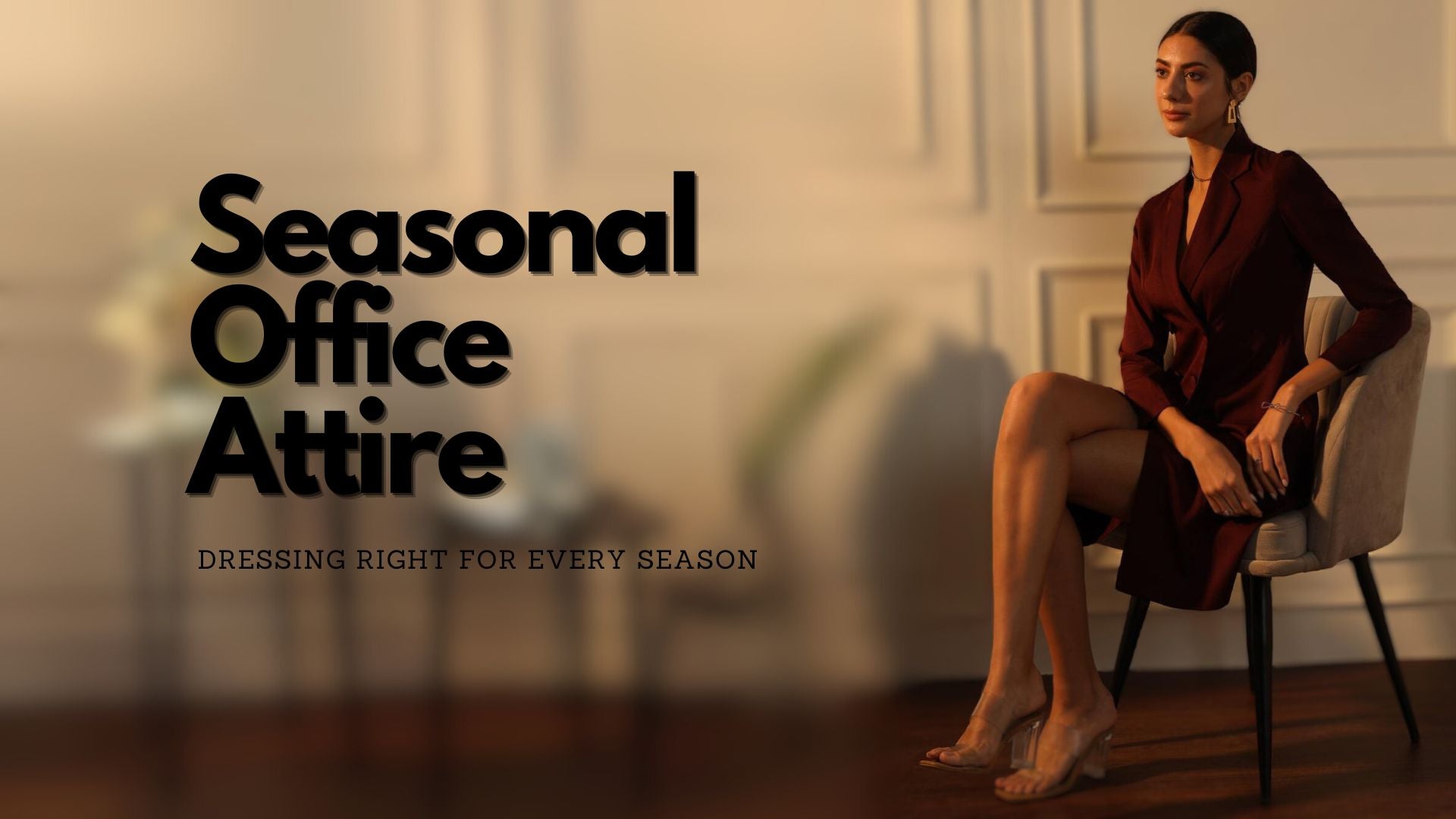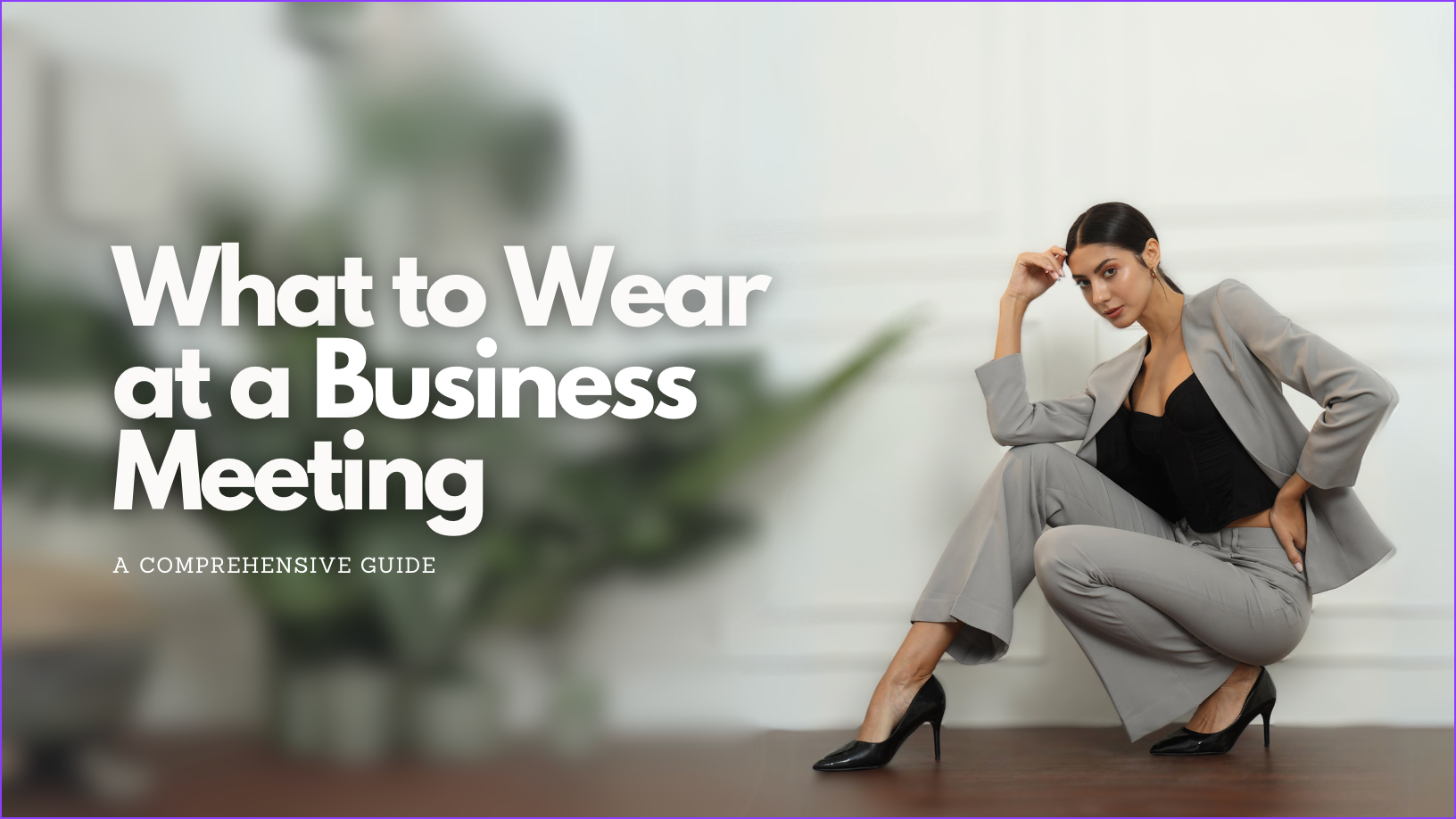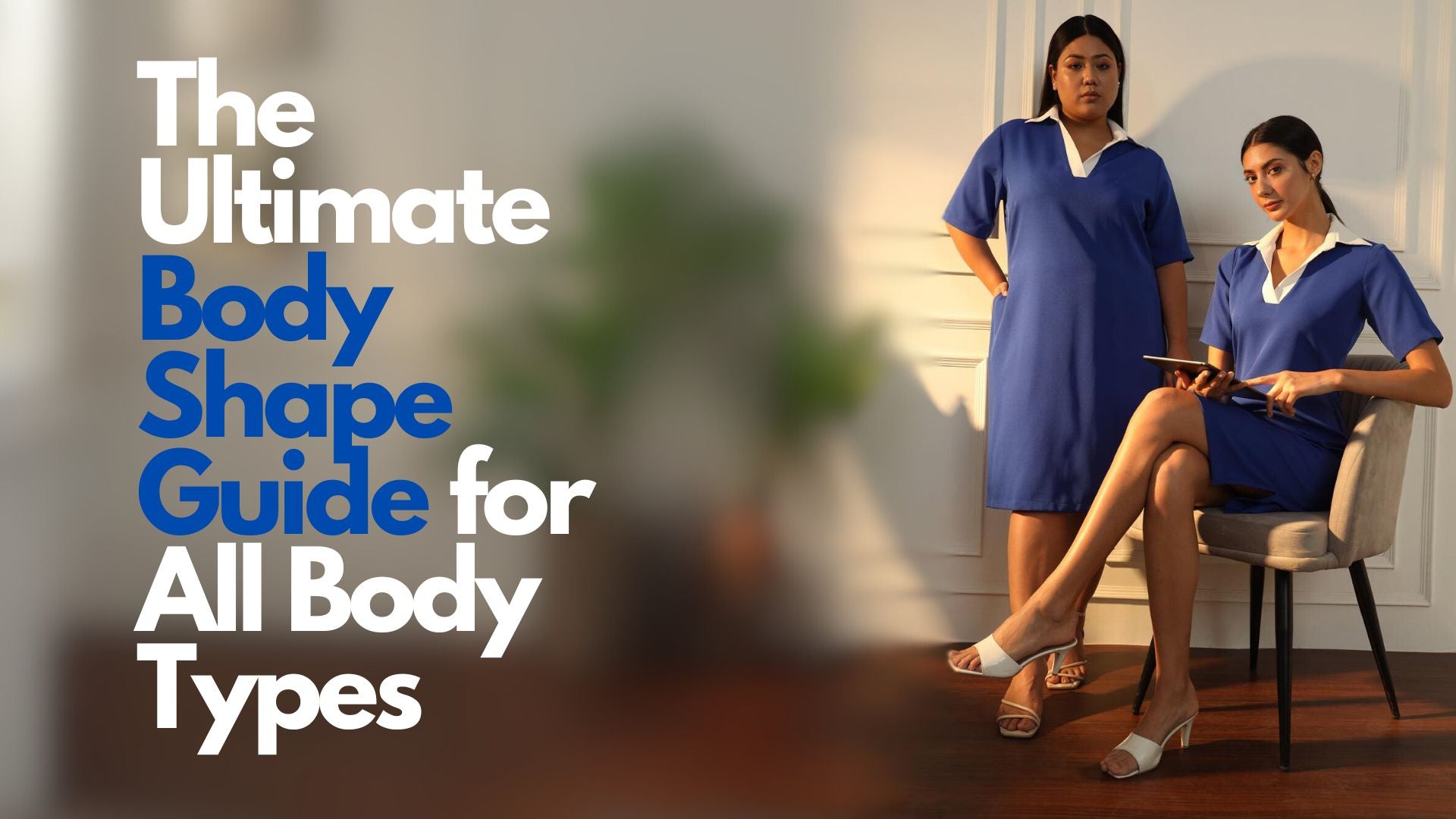
Seasonal Office Attire: Dressing Right for Every Season
Why Seasons Affect Office Attire
The changing seasons significantly impact our clothing choices in the workplace. Each season brings unique weather conditions, necessitating specific attire for comfort, professionalism, and even safety. Dressing appropriately not only affects how we feel but also influences how we are perceived by colleagues and clients alike.
Consider this: wearing the right outfit can enhance job performance by boosting confidence and comfort and even ensuring safety during harsh weather swings.
In spring, for instance, fluctuating temperatures require outfits that can adapt throughout the day. Fall invites rich colors and layered looks, while winter demands insulated fabrics to combat the cold. Each season offers an opportunity to express individual style while adhering to the decorum of the office environment—an essential balance for any professional.
Seasonal Office Attire - What Does it Mean?
Seasonal office attire encompasses clothing collections that align with the varying climates throughout the year. Understanding how to navigate seasonal office attire is crucial for elevating your presence in the professional world with poise and confidence.
These collections aren't merely about comfort; they reflect stylistic choices and underscore your respect for workplace culture, whether casual or formal.
Seasonal Work Outfit Ideas: Spring
With spring in full bloom, temperatures begin to rise, ushering in a tide of fresh outfits and vibrant colors. This season emphasizes a blend of comfort and style:
- Light Jackets and Cardigans: Spring garments often involve light jackets or cardigans that provide warmth without feeling cumbersome. These items transition easily from chilly mornings to warm afternoons—look for breathable fabrics like cotton or linen that keep you comfortable.
- Raincoats and Umbrellas: Spring showers are inevitable, making stylish rainwear essential. A classic trench coat not only shields you from rain but also enhances your spring aesthetic. Don’t forget a compact umbrella—one that neatly fits into your tote yet withstands those sudden gusts of wind.
- Short Sleeves and Lightweight Scarves: As temperatures steadily increase, integrating short-sleeve blouses or lightweight tops becomes crucial. Lightweight, colorful scarves in silk or cotton can showcase your personal style while adding a layer of warmth when needed.
- Patterns and Prints: Embrace floral patterns and vibrant hues during this joyous season. Incorporating seasonal prints into your wardrobe can uplift your mood and add a playful touch to your office attire.
Seasonal Work Outfit Ideas: Summer
As summer breaks onto the scene with its sweltering heat, a thoughtful wardrobe prioritizing comfort is essential while maintaining a professional demeanor:
- Lightweight Fabrics: Selecting breathable materials like cotton, linen, and moisture-wicking blends is imperative in summer attire. These fabrics allow for airflow and moisture absorption, keeping you comfortable and fresh even during the hottest days.
- Sundresses and Short Sleeves: A well-fitted sundress can serve as both a comfortable and professional option—pair it with tailored shorts or sleek skirts for a chic appearance. Embrace lively colors and playful patterns that mirror the vibrancy of the season to express positivity.
- Open-Toed Shoes and Sandals: Comfortable shoes are essential in summer; however, ensure that open-toed sandals remain stylish and fitting for your workplace. Choose chic options like sophisticated wedges or stylish espadrilles that resonate with casual professionalism.
- Accessories that Breathe: Opt for accessories that maintain comfort under heat; lightweight jewelry crafted from breathable materials helps keep your look elevated without adding weight.
Seasonal Work Outfit Ideas: Fall
As autumn arrives, the urge for layering becomes apparent, allowing for stylish combinations that reflect seasonal colors:
- Long Sleeves and Sweaters: Transitioning your outfits with lightweight sweaters provides versatility. Pairing these with skirts or well-tailored pants helps maintain professionalism while embracing autumn hues—think earthy tones like olives, russets, and deep navy.
- Jeans and Boots: Denim becomes an essential component for fall attire. Darker jeans present a polished appearance, especially when paired with ankle or knee-high boots that fuse warmth with fashion sensibility.
- Scarves and Hats: In fall, accessories come to life with rich textures; cozy scarves not only warm but stylize your outfits beautifully. Hats such as fedoras or berets can add a distinctive flair, allowing personal expression while offering protection from chilly winds.
- Elegant Layering Techniques: Mastering the art of layering is an essential wardrobe skill during fall. Playing with different textures can elevate your fashion game; combine knits with leather or tweed with soft cotton to create depth in your outfit.
Seasonal Work Outfit Ideas: Winter
Winter's chill enhances our focus on practical yet fashionable office attire. Balancing style with insulation is key:
- Heavy Coats and Parkas: Investing in a high-quality winter coat is non-negotiable in combating frosty weather challenges. Seek styles boasting both warmth and sophistication; wool coats or down jackets deliver superb insulation without sacrificing style.
- Scarves, Gloves, and Hats: Accessories play a significant role during colder months. Knitted scarves made from cashmere or luxurious wool elevate warmth while complementing your outfit’s aesthetic. Pair these with leather gloves and a stylish hat for a complete winter look.
- Thermal Underwear and Turtlenecks: Thermal layers under professional garments serve as an effective way to maintain body heat during frigid months without sacrificing style elements. Sophisticated turtlenecks lend an elegant touch while providing hidden warmth beneath blazers or dresses.
- Bold Winter Colors: Winter doesn’t have to be boring; embrace the richness of jewel tones such as emerald green or sapphire blue to infuse vibrancy into your professional wardrobe.
Transitioning Between Seasons
Transitioning between seasons can sometimes be daunting; however, effective strategies help navigate this process smoothly:
- Layering as Strategy: Layering offers flexibility when temperatures fluctuate throughout the day. Throw on lightweight jackets over dresses or short-sleeve tops to navigate changing conditions effectively while looking chic.
- Assess Your Wardrobe Regularly: Commit to reviewing your collection at each seasonal change to retain viable pieces on hand. Discard items that no longer fit or are worn out while replenishing timeless classics suitable for seasonal transitions.
- Utilize Transitional Pieces: Invest in versatile clothing that can bridge gap seasons—think medium-weight cardigans that work well over summer dresses in early fall or cropped jackets suitable for layering over winter attire as spring emerges.
Tips for Choosing the Right Fabrics
Choosing the right fabrics for each season is crucial for comfort and style. Here’s an expanded guide to help you make informed decisions:
Types of Fabric
Understanding the different types of fabric is essential for building a versatile working wardrobe. Fabrics can be broadly categorized into natural and synthetic types, each with its own set of characteristics.
- Natural Fabrics: These include cotton, linen, wool, and silk. Natural fabrics are typically breathable and comfortable, making them ideal for various seasons. For instance, cotton and linen are perfect for summer due to their lightweight and moisture-absorbing properties. Wool and silk, on the other hand, provide excellent insulation for colder months.
- Synthetic Fabrics: These include polyester, nylon, and acrylic. Synthetic fabrics are often durable and can offer specific benefits like moisture-wicking and quick-drying properties. However, they may not be as breathable as natural fabrics, making them less suitable for hot weather but excellent for colder climates.
Choosing Fabrics for Different Seasons
- Spring and Summer: Opt for breathable materials like cotton, linen, and rayon. These fabrics allow airflow and absorb moisture, keeping you cool. A cotton-linen blend is particularly effective, combining the softness of cotton with the breathability of linen. For a pop of color, consider woven fabrics with vibrant prints and patterns.
- Fall and Winter: Choose insulating fabrics like wool, cashmere, and fleece. These materials trap heat and provide warmth during colder months. A wool trench coat or a cashmere sweater can be both stylish and functional. Denim jackets are also versatile for fall, offering a blend of warmth and casual style.
Specific Garment Suggestions
- Trench Coat: A classic trench coat made from a durable fabric like cotton or wool can be a versatile piece for both spring and fall. It provides a layer of warmth while maintaining a polished look.
- Maxi Dress: For summer, a maxi dress in a lightweight fabric like cotton or rayon can be both comfortable and professional. Pair it with a denim jacket for a stylish yet practical ensemble.
- High Boots: In winter, high boots made from leather or suede can provide additional warmth and style. Pair them with a matching trouser or a skirt for a cohesive look.
Important Factors to Consider
When choosing fabrics, consider factors such as breathability, moisture-wicking properties, and insulation. These characteristics will help you select the right fabric for your day-to-day activities and ensure comfort throughout the year.
- Breathability: Fabrics like cotton and linen are highly breathable, making them ideal for warmer climates.
- Moisture-Wicking: Synthetic fabrics like polyester and nylon are excellent for moisture-wicking, keeping you dry during physical activities or in humid conditions.
- Insulation: Wool and cashmere are excellent insulators, making them perfect for winter attire.
Dress Codes and Fabric Choices
Understanding your office dress code is crucial when choosing fabrics. For formal environments, opt for high-quality natural fabrics like wool and silk. In more casual settings, you can experiment with a wider range of fabrics, including blends and synthetics.
Conclusion
Understanding the nuances of seasonal office attire enables an individual to navigate professional environments effectively while exuding confidence and personality through fashion choices tailored to climate conditions.
If you're looking to elevate their work wardrobes with exquisite and functional pieces, exploring PowerSutra's collection is an excellent starting point—crafted thoughtfully to celebrate every woman’s uniqueness while ensuring you shine in any workplace setting.
Discover more at PowerSutra and unlock the keys to quality office attire today!
Frequently Asked Questions
1. What are the best fabrics for summer office attire?
Lightweight, breathable fabrics like cotton, linen, and moisture-wicking materials are ideal for summer office attire.
2. How can I transition my wardrobe from summer to fall?
Layering is key. Add light jackets, sweaters, and scarves to your summer outfits to adapt to cooler fall temperatures.
3. What should I wear to the office in winter?
Invest in heavy coats, thermal underwear, and warm accessories like scarves, gloves, and hats to stay warm while looking professional.
4. How do I choose the right office attire for spring?
Opt for light jackets, cardigans, and short-sleeve tops. Be prepared for spring showers with water-resistant raincoats and umbrellas.
5. Can I wear open-toed shoes to the office in summer?
Yes, but ensure they are appropriate for your office environment. Choose stylish yet professional open-toed shoes or sandals.


